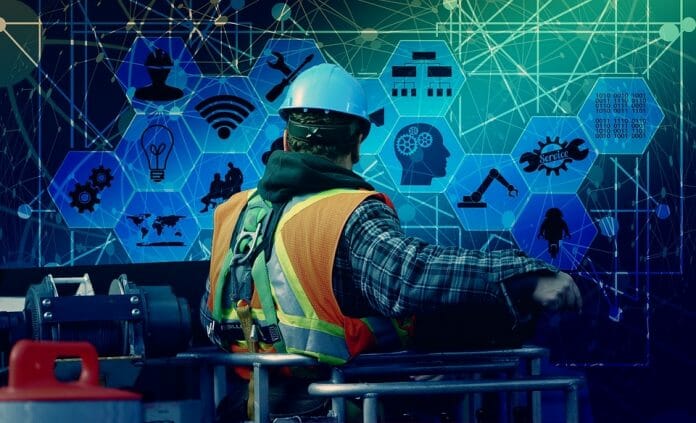According to the late American futurist Alvin Toffler, “Change is not merely necessary to life – it is life.” Indeed, change is paramount, as the world works its way out of the current pandemic.
What does the new normal look like? No one knows for sure, but it is clear that to secure a leading position tomorrow, companies need to accelerate digitalization today and position themselves for unexpected twists tomorrow. It is necessary for businesses to achieve a high level of overall resilience and be more productive with increased agility. In the face of relentless global competition, process and capital-intensive companies need to be strategic and focused. Acceleration is good but not enough. It is mission-critical for businesses to concentrate on generating measurable value by deploying technology that improves the dual challenges of sustainability and profitability. The Malaysian Digital Economy Blueprint, unveiled in February 2021, is expected to drive Malaysia’s digital economy and help contribute 22.6% to the country’s gross domestic product (GDP) by 2025.
Industrial Artificial Intelligence (AI) is a strategic business weapon, as it combines the power of analytics and AI machine learning with the crucial guard-rails of domain expertise, to extract value from industrial data. Industrial AI will help navigate increasingly complex supply chain options and decisions. Momentum from rapidly changing global carbon mitigation necessitates focus on energy transition across Asia, especially Korea, Japan, China, Indonesia and India. It is also necessary to focus on plastic waste concerns driving the circular economy – for all of which, Industrial AI is already generating value for users. Companies need to deploy embedded AI driven industrial solutions with crucial in-built domain expertise, augmenting those AI tools and data to unlock true value.
Visibility into the Game Plan
With virtual or hybrid working arrangements still in place, companies need to demonstrate their ability to operate and manage assets remotely. These businesses also need to increase the integrity and safety standards of their assets concurrently – via the use of analytics.
Even before the pandemic induced economic slowdown, employees and customers expected the energy industry to operate clean, efficient businesses. However, the latest generation of workers and customers are demanding even greater levels of accountability around sustainability. In a new global industry survey of sustainability patterns commissioned by AspenTech, 48% of chemical industry respondents reported that customers are key drivers of their sustainability initiatives, while 65% said that a broad societal obligation is a key driver. Organisations know that if they want to protect their brand reputation and attract these people to work for and engage with them, they must build cleaner, safer, more sustainable businesses that allow them to contribute to creating a world fit for tomorrow.
Many energy players are also diversifying their energy mix, all of which, points to more projects in energy transition areas, such as the hydrogen economy, carbon capture, biofeedstock and renewable energy assets. According to ‘Energy Outlook and Energy Saving Potential in East Asia 2020’ report published by Economic Research Institute for ASEAN & East Asia, Malaysia aims to increase its renewable energy’s share in the capacity mix to 20% by 2025.
A New Industry Normal
Skills shortage will intensify beyond the next five years, as industry downsizing whittles down valuable domain expertise. With most data scientists still relatively new on the job, the use of digital tools and analytics looks to be on the rise, especially solutions that accelerate collaboration between the new wave of data scientists and technical domain experts. Cost and carbon footprint reduction will remain high on the agenda. An anticipated shift in refining production mix towards chemical feedstocks will drive growth in chemicals which is expected to account for half of the near-term demand growth for oil in Asia.
As Asian economies and middle-class growth continue to work towards recovery, mega integrated plant projects are on track to address changing market demands efficiently. The industry trajectory continues to shift from oil to gas consumption, especially in areas of chemical feedstocks and power generation. Natural gas and renewables can address increasing demand for electricity, while the hydrogen economy looks set to be an emerging dimension. In terms of energy equivalency, Malaysia’s gas reserve is four times the size of its crude oil reserves. This sizeable energy source is expected to play an increasingly important role in meeting fluctuating demands.
As these new energy areas gain momentum, rapid and powerful early concept design is crucial for the techno-economic analysis to ensure a profitable asset lifecycle.
Hybrid models combining rigorous and AI-driven models are increasingly required to optimize complex operations more accurately and autonomously, especially for energy transition technology options. For capital projects, estimation and project progress transparency can unlock value. To manage project risk efficiently, it is necessary to visualize, analyze, benchmark and share data to increase speed and certainty. The result is a more agile, collaborative, and informed asset design – with a seamless and more predictable execution process.
Long Term Trajectory on Course
In terms of timeline, some aspects of operations will become autonomous in the relatively short term, while broader autonomy is a longer-term five to ten-year goal. Typically, oil and chemical assets are too complex to run completely autonomously, at least within the next five to ten years. Instead, we are driving towards enabling a self-sustaining plant with operators increasingly performing strategic oversight functions.
In closing, two iconic quotes from Alvin Toffler, “Knowledge is the most democratic source of power” and “The illiterate of the 21st century will not be those who cannot read and write, but those who cannot learn, unlearn, and relearn.” These quotes highlight the importance of digital technology and industrial AI in empowering workers to mobilize knowledge and learning from industrial data.
Indeed, the Self-Optimizing Plant capitalizes on data to generate knowledge and Industrial AI provide companies with the massive ability to learn, unlearn and relearn. Back to the future, Toffler is spot-on when it comes to process and capital-intensive companies embracing change and driving value with the unique power of Industrial AI right here, right now, in this new industry normal.
Ron Beck is Aspen Technology’s Senior Director for Industry Marketing and Lawrence Ng is Aspen Technology’s Vice President of Sales, Asia Pacific, and Japan.
Aspen Technology (AspenTech) is a global leader in asset optimization software. Its solutions address complex, industrial environments where it is critical to optimize the asset design, operation and maintenance lifecycle. AspenTech uniquely combines decades of process modelling expertise with artificial intelligence.











